 |
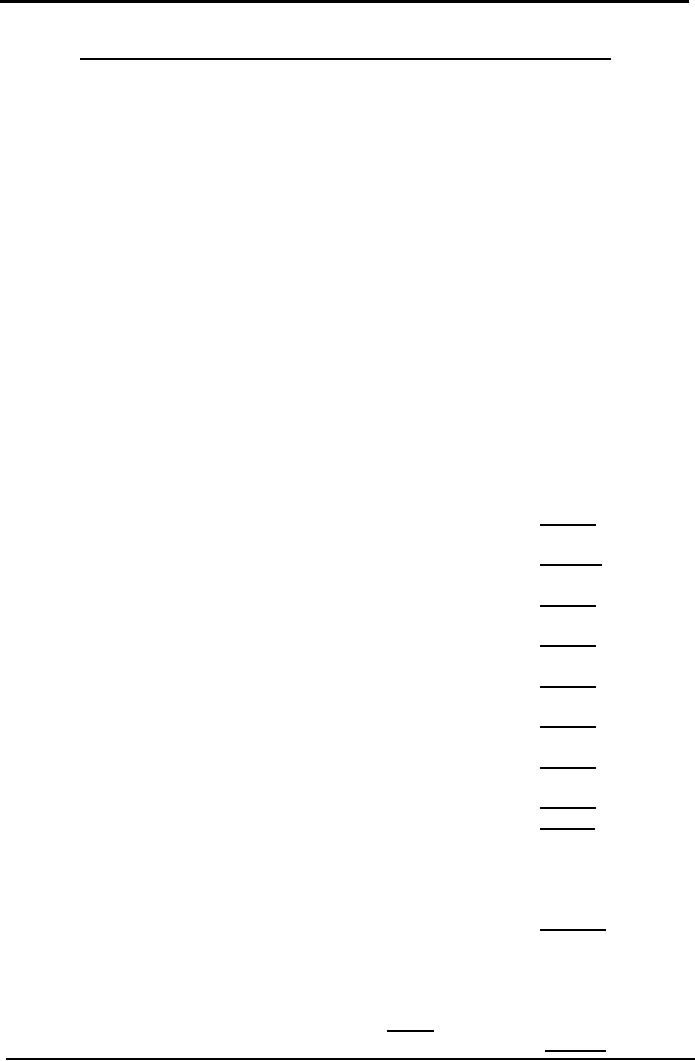
Cost
& Management Accounting
(MGT-402)
VU
LESSON#
5
PROBLEMS
IN PREPARATION OF FINANCIAL
STATEMENTS
Income
Statement Ratios
Cost
accountants are also required to analyze
the results gathered from
the financial
statements.
These ratio analyses help
the management to take certain
decisions. These ratios
do
not
include complex ratios like
financial ratios or investment
ratio. Cost accountants are
concerned
about
the ratios relating to the
profits and manufacturing
cost. These might
include:
1.
Gross margin rate
2.
Gross markup rate
3.
Net profit ratio
4.
Cost of goods sold to sales
ratio
5.
Inventory turnover
ratio
6.
Inventory holding period
These
ratios will be calculated
based on the information in
the following cost of goods
sold
statement
and income statement.
Entity
Name
Cost
of Goods manufactured statement
for
the year ended_______
Rupees
Direct
Material Consumed
Opening
inventory
10,000
Add
Net Purchases
100,000
Material
available for use
110,000
Less
Closing inventory
(20,000)
Direct
Material used
90,000
Add
Direct labor
60,000
Prime
cost
150,000
Add
Factory overhead Cost
(60,000
x 150%)
90,000
Total
factory cost
240,000
Add
Opening Work in
process
30,000
Cost
of good to be manufactured
270,000
Less
Closing Work in process
50,000
Cost
of good manufactured
220,000
Add
Opening finish goods
100,000
Cost
of good to be sold
320,000
Less
closing finish goods
10,000
Cost
of good to sold at
normal
310,000
Income
Statement
Rupees
Sales
600,000
Less
Cost of goods sold (at
normal)
(310,000)
Gross
profit
290,000
Less
Operating expenses
Selling
and marketing
50,000
Distribution
30,000
Administrative
20,000
(100,000)
30
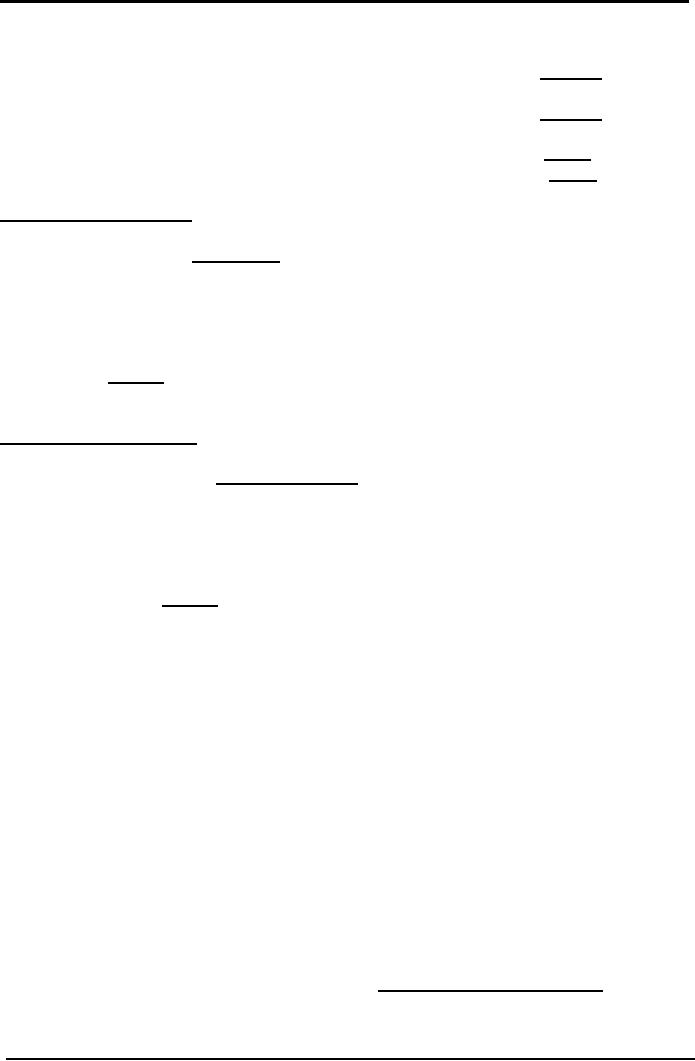
Cost
& Management Accounting
(MGT-402)
VU
Operating
profit
190,000
Less
Financial Expenses
Interest
on loan
(50,000)
Profit
before tax
140,000
Less
Income Tax
(60,000)
Net
profit
80,000
Add
over-applied FOH cost
10,000
Net
profit
90,000
Gross
Profit Margin Rate
Gross
Profit margin rate = Gross
Profit x 100 = %
Sales
This
ratio identifies the ratio of
gross profit over sales. In
this ratio sale is held
equal to 100%. The
%age
of cost of goods sold is 100
the %age margin. It means
that if margin is 25% then
%age
cost
of goods sold will be
75%
Example:
290,000
x 100 = 48.33%
600,000
Gross
Profit Markup Rate
Gross
Profit markup rate =
Gross
Profit
x
100 = %
Cost
of goods sold
This
ratio identifies the ratio of
gross profit over cost of
goods sold. In this ratio
cost of goods
sold
is held equal to 100%. The
%age of sales is 100 + the
%age of markup. It means
that if
markup
is 25% then %age of sales
will be 125%
Example:
290,000
x 100 = 93.5%
310,000
These
ratios are also known as
cost structure ratios. The
cost structure can best be
explained as
below:
Incase
of
Incase
of
Margin
Markup
Sales
100%
125%
Cost
of goods sold
75%
100%
Gross
profit
25%
25%
As
shown above in both of the
cases gross profit is 25%
but the base is different.
Where the sale is
100%
the cost of goods sold is
75%, where the cost of goods
sold is 100% the sales is
125%.
At
this stage some times
sales figure is missing and
it is required to calculate gross profit
using the
margin
rate (based on sales). The
given information in this case is
cost of goods sold. Most of
the
students
make a common error, they
straight away calculate gross
profit %age on the figure of
cost
of
goods sold, this is wrong in
this situation as the base
is the figure of sales which
is not given.
Here
the following formula will
be used to calculate gross
profit:
Required
information = given information x
%age
of required information
%age
of given information
In
the above situation where
cost of goods sold is given and
gross profit is to be calculated
using
the
margin rate (based on
sales), following calculations will be
followed:
31
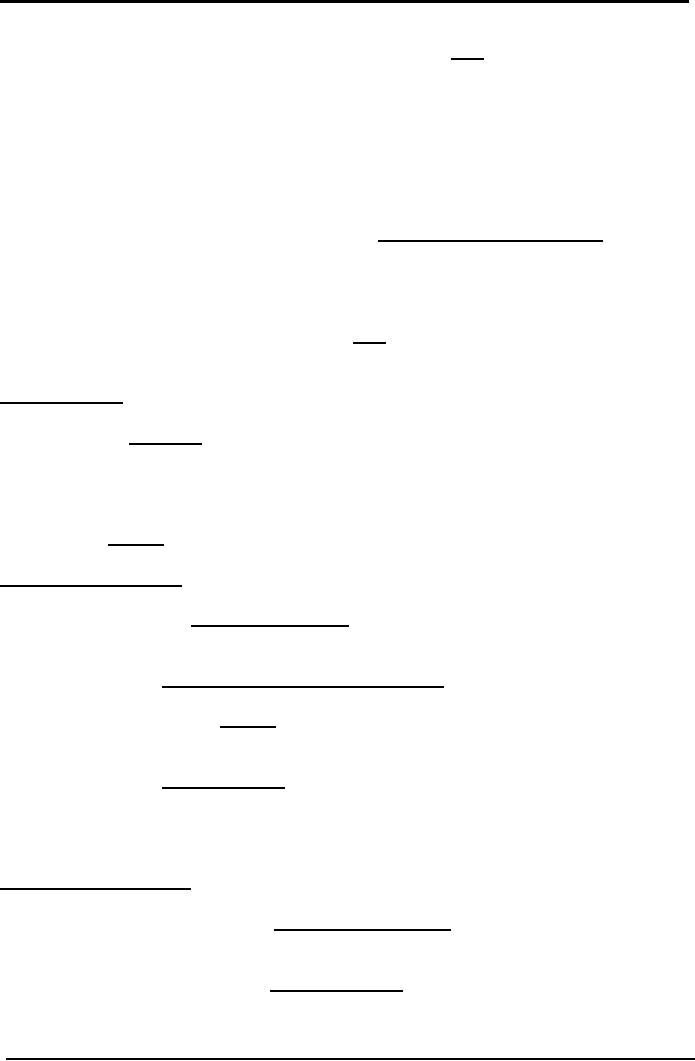
Cost
& Management Accounting
(MGT-402)
VU
Gross
profit
=
Cost
of goods sold (absolute amount) x
25%
75%
Same
concept is followed where cost of goods
sold figure is missing and it is required
to calculate
gross
profit using the markup rate
(based on cost of goods sold).
The given information in
this
case
is that of sales. Most of
the students make a common
error, they straight away
calculate gross
profit
%age on sales, this is
wrong, as the base should be
cost of goods sold where markup
rate is
to
be used. Here again the
above formula will be used
to calculate gross
profit:
Required
information = given information x
%age
of required information
%age
of given information
In
the above situation where
sales is given and gross
profit is to be calculated using the
markup
rate
(based on cost of goods sold),
following calculations will be
followed:
Gross
profit
=
Sales
(absolute amount) x
25%
125%
Net
Profit Ratio
Net
Profit ratio = Net Profit x
100 = %
Sales
This
ratio identifies the ratio of
net profit over
sales.
Example:
290,000
x 100 = 15%
600,000
Inventory
turnover ratio
Inventory
turnover ratio =
Cost
of goods sold
Average
inventory
Average
inventory = Opening Inventory + Closing
Inventory
2
Inventory
turnover ratio =
310,000
= 5.54 times
55,000
Average
inventory = 100,000 + 10,000 =
55,000
2
This
ratio is expressed in times. It
shows that, for how
many time the inventory is
turning over
towards
cost of goods sold.
Inventory
holding period
Inventory
holding period in days =
Number
of days in a year
Inventory
turnover ratio
Alternatively
=
Average
inventory x 365
Cost
of goods sold
32
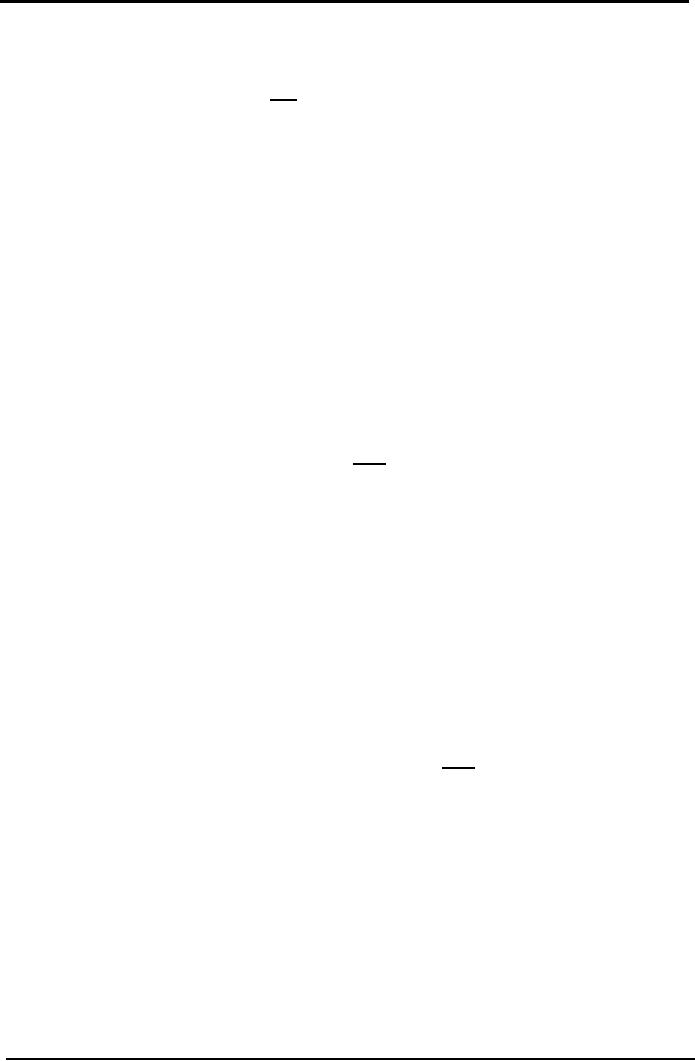
Cost
& Management Accounting
(MGT-402)
VU
If
this ratio is to be calculated in
number of months then number
of days will be replaced
by
number
of months in year.
Inventory
holding period in months = 12 = 2.17
months
5.54
This
ratio tells the period for
which the inventory will
remain in store/godown.
PRACTICE
QUESTIONS
Q.
1
Sales
= 800,000
Markup
= 25% of cost
Calculate
= COGS and Gross profit
margin.
Hint:
Incase
of
Incase
of
Margin
Markup
Sales
100%
125%
Cost
of goods sold
75%
100%
Gross
profit
25%
25%
Gross
profit
=
Sales
(absolute amount) x
25%
125%
Q.
2
COGS
= 50,000
GP
Margin = 25% of sales
Calculate
= Sales and gross profit
margin
Hint:
Incase
of
Incase
of
Margin
Markup
Sales
100%
125%
Cost
of goods sold
75%
100%
Gross
profit
25%
25%
Gross
profit
=
Cost
of goods sold (absolute amount) x
25%
75%
Q.
3
Gross
profit = 40,000
GP
Margin = 25% of sales
Calculate
= Sales and cost of goods
sold
Hint:
Incase
of
Incase
of
Margin
Markup
Sales
100%
125%
Cost
of goods sold
75%
100%
Gross
profit
25%
25%
33
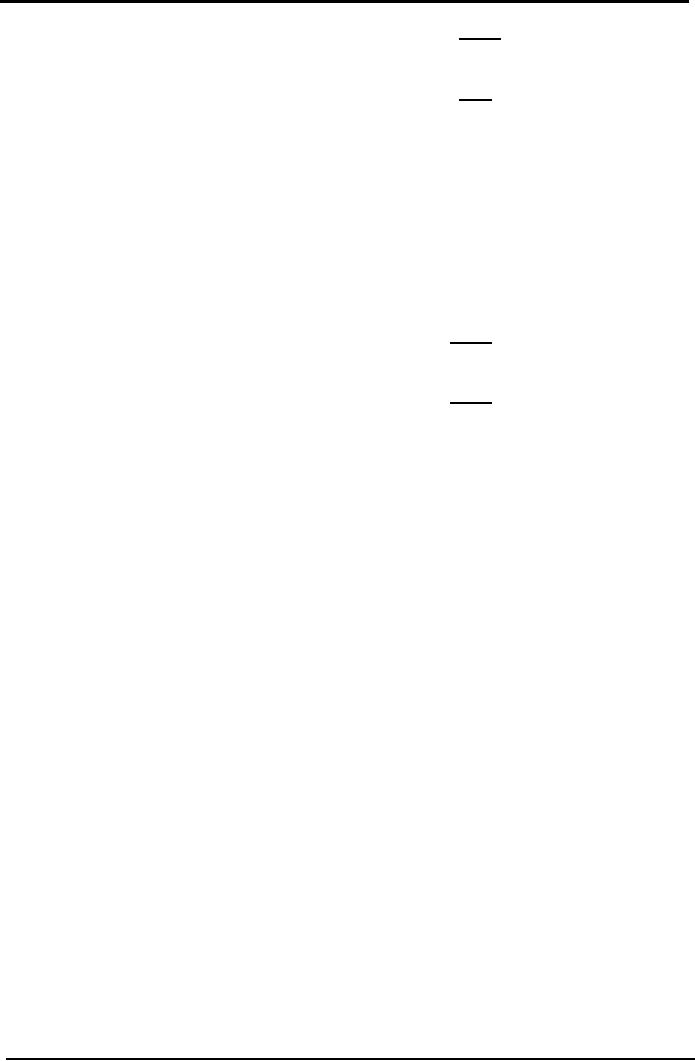
Cost
& Management Accounting
(MGT-402)
VU
Sales
=
Gross
profit (absolute amount) x
100%
25%
Cost
of goods sold
=
Gross
profit (absolute amount) x
75%
25%
Q.
4
Gross
profit = 60,000
GP
Markup = 25% of cost
Calculate
= Sales and cost of goods
sold
Hint:
Incase
of
Incase
of
Margin
Markup
Sales
100%
125%
Cost
of goods sold
75%
100%
Gross
profit
25%
25%
Sales
=
Gross
profit (absolute amount) x
125%
25%
Cost
of goods sold
=
Gross
profit (absolute amount) x
100%
25%
Q.
5
Rupees
Sales
300,000
Direct
Material purchased
100,000
Direct
Labor
80,000
FOH
70,000
Increase
in material inventory
10,000
Decrease
in WIP inventory
5,000
Increase
in finish goods
inventory
30,000
Prepare
cost goods sold statement and
calculate the following
ratios
1.
Gross profit markup
ratio
2.
Gross profit margin
ratio
3.
Net profit ratio
4.
Finished goods inventory turnover
ratio
5.
Finished goods inventory holding period
in months
(Opening
inventory Rs. 60,000 and
Closing inventory Rs.
90,000)
Hint:
Increase
in inventory means closing inventory is
greater than the opening
inventory.
Decrease
in inventory means closing inventory is
lesser than the opening
inventory.
Where
the inventory is increased by a
figure say Rs. 100,
assume that the opening
inventory was
zero
and closing inventory is Rs.
100.
Where
the inventory is decreased by a
figure say Rs. 100,
assume that the closing
inventory is zero
and
opening inventory was Rs.
100.
Q.
6
Total
factory cost
?
WIP
opening
20,000
WIP
closing
10,000
Finish
goods opening
30,000
Finis
goods closing
50,000
Cost
of goods sold
190,000
Calculate
total factory
cost
34

Cost
& Management Accounting
(MGT-402)
VU
Hint:
Total
factory cost will be
calculated through a reverse
calculation. Here cost of
goods sold is given
this
will be adjusted in reverse
order for changes in
finished goods inventory to
get the figure of
cost
of goods manufactured. The
cost of goods manufactured
will be adjusted in reverse
order for
changes
in work in process inventory to
get the figure of total
factory cost.
Q.
7
Opening
material inventory
Rs.
10,000
Closing
material inventory
5,000
Direct
Labor
30,000
FOH
20,000
Total
factory cost
80,000
Calculate
the value of material purchased during
the year.
Hint:
Cost
of material consumed will be calculated
through a reverse calculation
starting from total
factory
cost in which factory
overhead cost and direct
labor cost will be added,
thereafter the cost
of
material consumed will be adjusted in
reverse order with the
changes in material inventory to
know
the amount of material purchased
during the year.
35
Table of Contents:
- COST CLASSIFICATION AND COST BEHAVIOR INTRODUCTION:COST CLASSIFICATION,
- IMPORTANT TERMINOLOGIES:Cost Center, Profit Centre, Differential Cost or Incremental cost
- FINANCIAL STATEMENTS:Inventory, Direct Material Consumed, Total Factory Cost
- FINANCIAL STATEMENTS:Adjustment in the Entire Production, Adjustment in the Income Statement
- PROBLEMS IN PREPARATION OF FINANCIAL STATEMENTS:Gross Profit Margin Rate, Net Profit Ratio
- MORE ABOUT PREPARATION OF FINANCIAL STATEMENTS:Conversion Cost
- MATERIAL:Inventory, Perpetual Inventory System, Weighted Average Method (W.Avg)
- CONTROL OVER MATERIAL:Order Level, Maximum Stock Level, Danger Level
- ECONOMIC ORDERING QUANTITY:EOQ Graph, PROBLEMS
- ACCOUNTING FOR LOSSES:Spoiled output, Accounting treatment, Inventory Turnover Ratio
- LABOR:Direct Labor Cost, Mechanical Methods, MAKING PAYMENTS TO EMPLOYEES
- PAYROLL AND INCENTIVES:Systems of Wages, Premium Plans
- PIECE RATE BASE PREMIUM PLANS:Suitability of Piece Rate System, GROUP BONUS SYSTEMS
- LABOR TURNOVER AND LABOR EFFICIENCY RATIOS & FACTORY OVERHEAD COST
- ALLOCATION AND APPORTIONMENT OF FOH COST
- FACTORY OVERHEAD COST:Marketing, Research and development
- FACTORY OVERHEAD COST:Spending Variance, Capacity/Volume Variance
- JOB ORDER COSTING SYSTEM:Direct Materials, Direct Labor, Factory Overhead
- PROCESS COSTING SYSTEM:Data Collection, Cost of Completed Output
- PROCESS COSTING SYSTEM:Cost of Production Report, Quantity Schedule
- PROCESS COSTING SYSTEM:Normal Loss at the End of Process
- PROCESS COSTING SYSTEM:PRACTICE QUESTION
- PROCESS COSTING SYSTEM:Partially-processed units, Equivalent units
- PROCESS COSTING SYSTEM:Weighted average method, Cost of Production Report
- COSTING/VALUATION OF JOINT AND BY PRODUCTS:Accounting for joint products
- COSTING/VALUATION OF JOINT AND BY PRODUCTS:Problems of common costs
- MARGINAL AND ABSORPTION COSTING:Contribution Margin, Marginal cost per unit
- MARGINAL AND ABSORPTION COSTING:Contribution and profit
- COST – VOLUME – PROFIT ANALYSIS:Contribution Margin Approach & CVP Analysis
- COST – VOLUME – PROFIT ANALYSIS:Target Contribution Margin
- BREAK EVEN ANALYSIS – MARGIN OF SAFETY:Margin of Safety (MOS), Using Budget profit
- BREAKEVEN ANALYSIS – CHARTS AND GRAPHS:Usefulness of charts
- WHAT IS A BUDGET?:Budgetary control, Making a Forecast, Preparing budgets
- Production & Sales Budget:Rolling budget, Sales budget
- Production & Sales Budget:Illustration 1, Production budget
- FLEXIBLE BUDGET:Capacity and volume, Theoretical Capacity
- FLEXIBLE BUDGET:ANALYSIS OF COST BEHAVIOR, Fixed Expenses
- TYPES OF BUDGET:Format of Cash Budget,
- Complex Cash Budget & Flexible Budget:Comparing actual with original budget
- FLEXIBLE & ZERO BASE BUDGETING:Efficiency Ratio, Performance budgeting
- DECISION MAKING IN MANAGEMENT ACCOUNTING:Spare capacity costs, Sunk cost
- DECISION MAKING:Size of fund, Income statement
- DECISION MAKING:Avoidable Costs, Non-Relevant Variable Costs, Absorbed Overhead
- DECISION MAKING CHOICE OF PRODUCT (PRODUCT MIX) DECISIONS
- DECISION MAKING CHOICE OF PRODUCT (PRODUCT MIX) DECISIONS:MAKE OR BUY DECISIONS